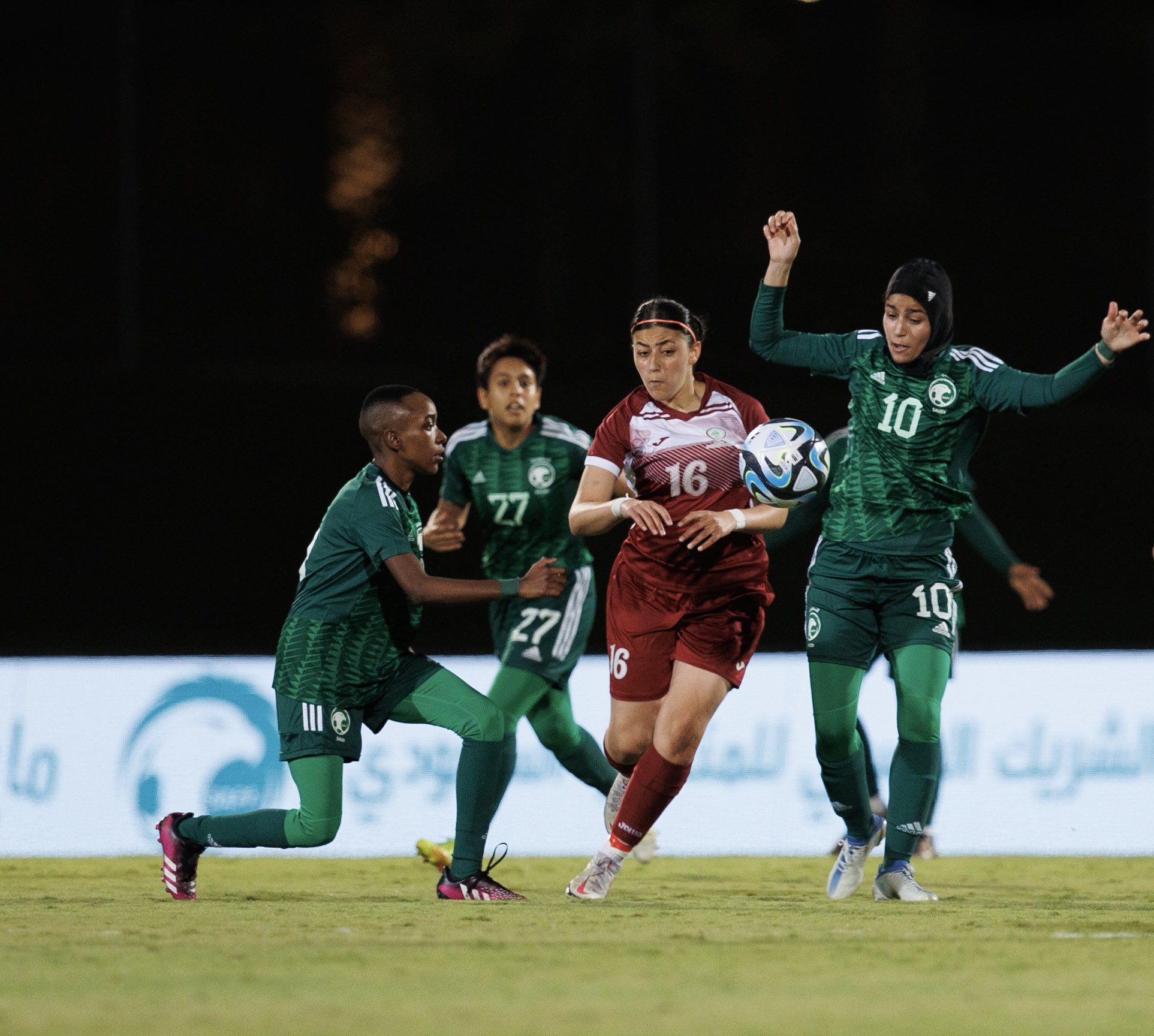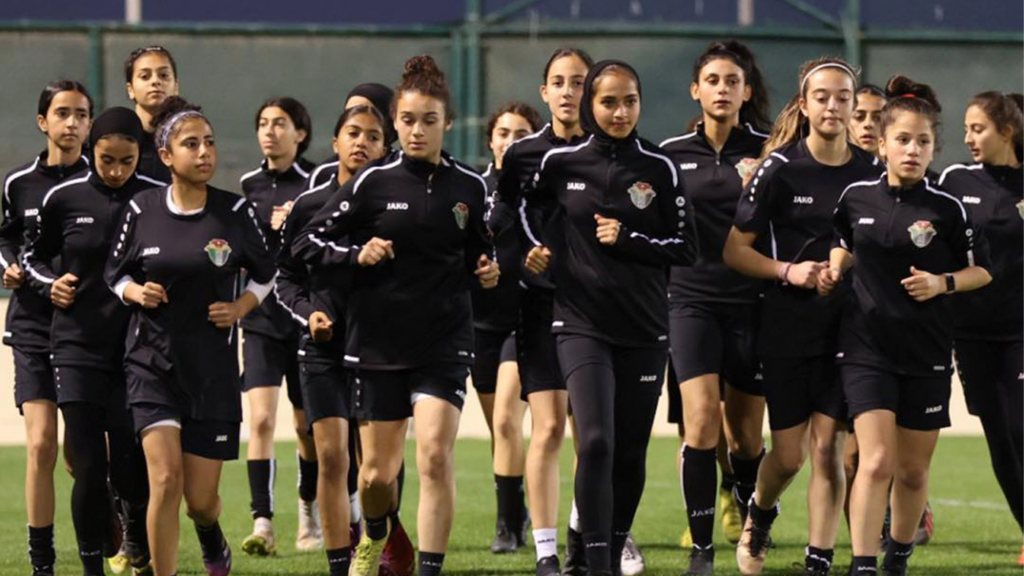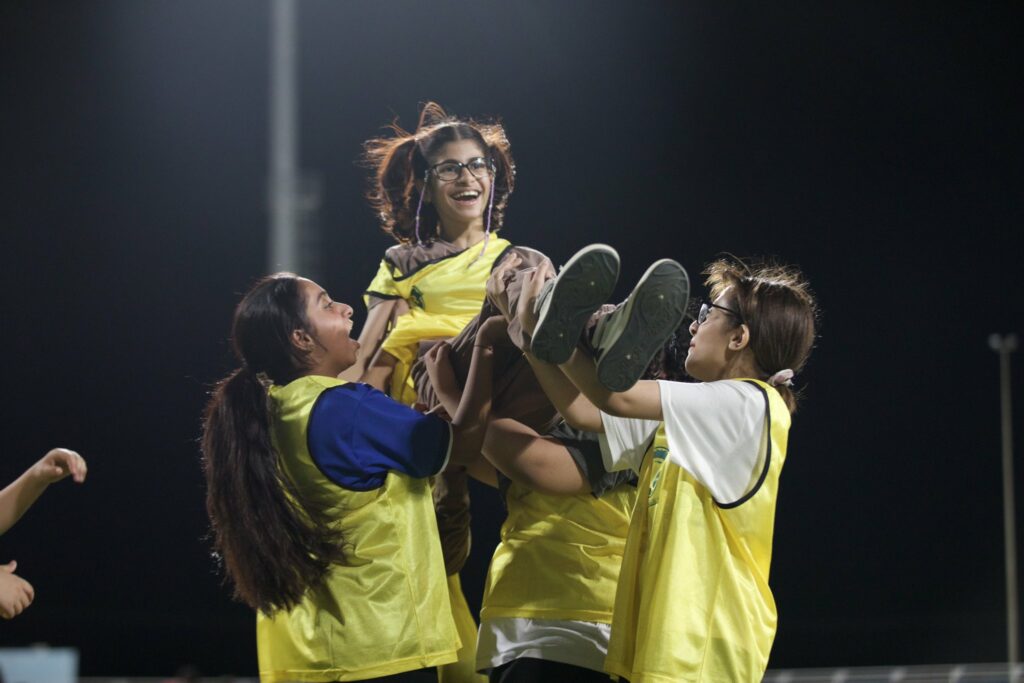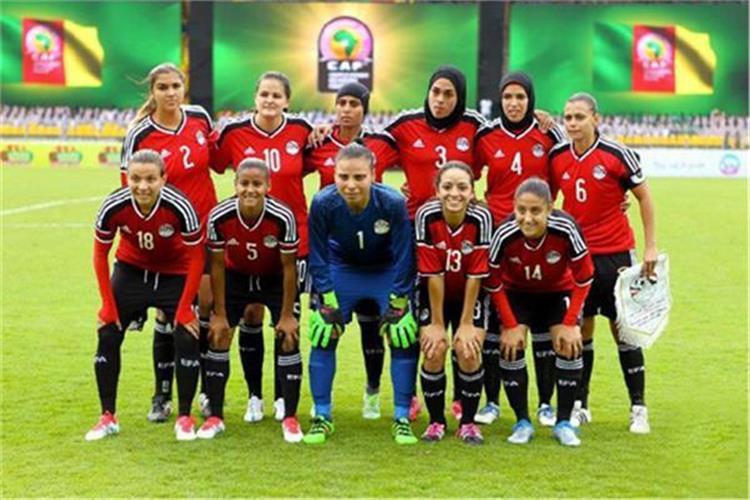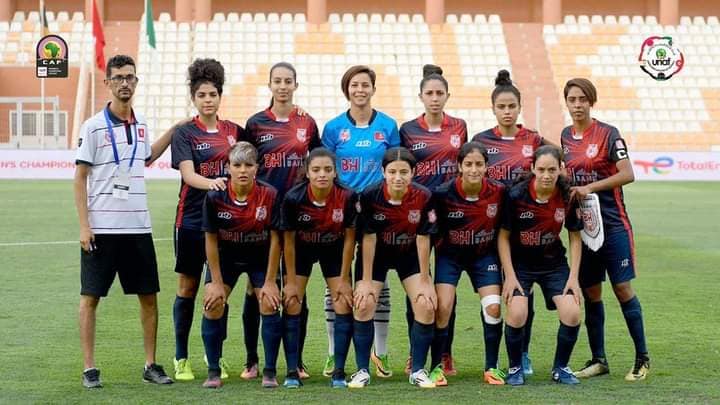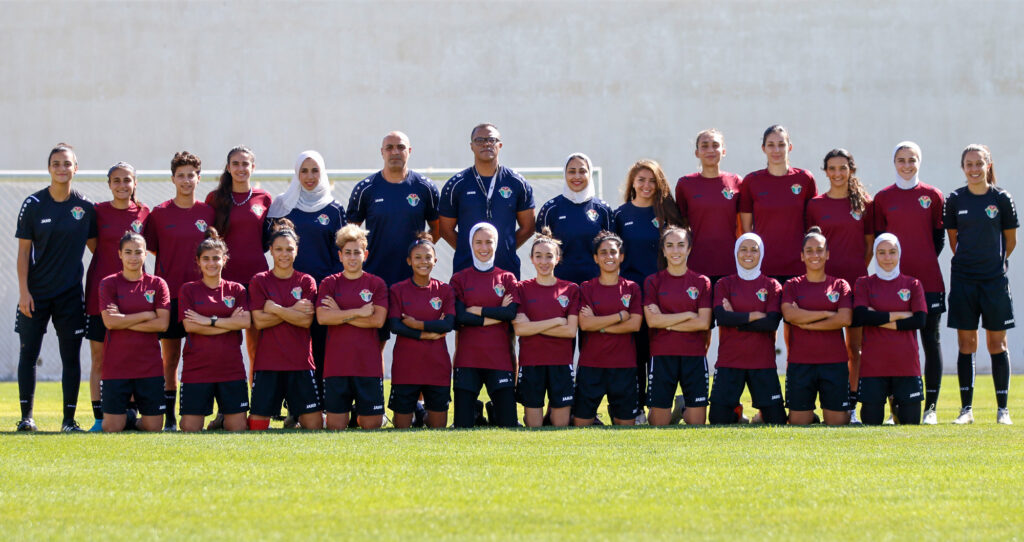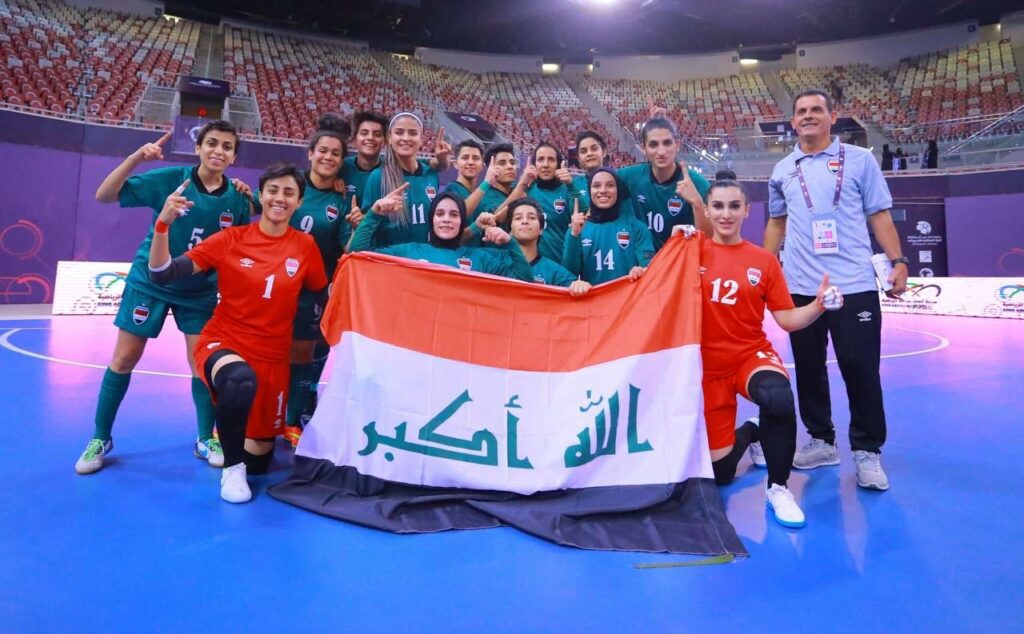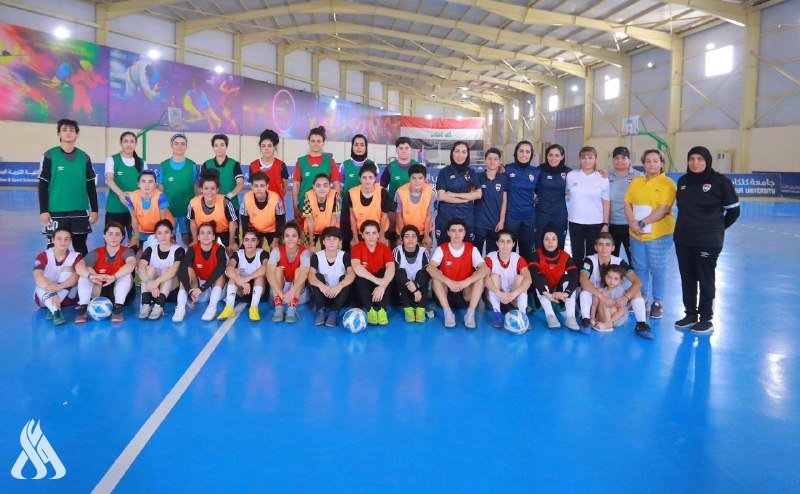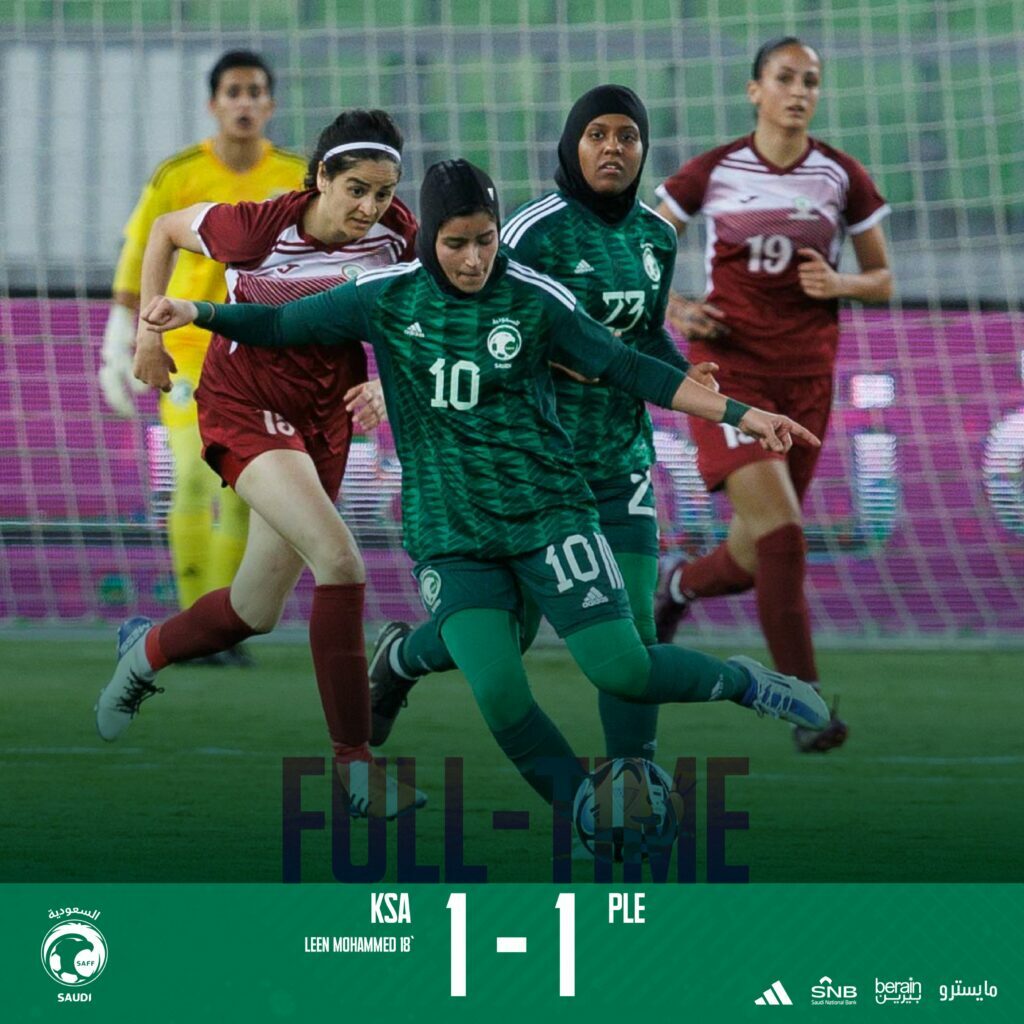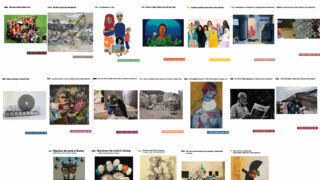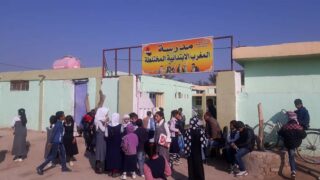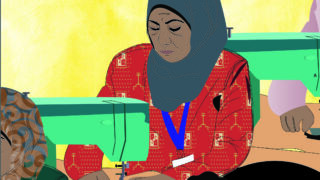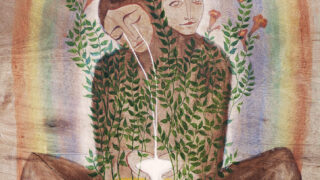
This publication has benefited from the support of the Rosa Luxemburg Foundation. This text may be reproduced in part or in full, provided the source is acknowledged.
The road women have travelled to secure their place in various fields of life has been far from easy. Knowing this, we hold our breaths as we eagerly await their entrance into domains demanding extraordinary physical and mental efforts, with the recognition that this also entails navigating the complexities of their social environments, particularly in the realm of professional sports. The few successful cases that emerged in individual women’s sports, such as athletics, were kinds of small miracles achieved by women who had taken the road less travelled. Conversely, it was more difficult for women to engage or excel in team sports that require comprehensive systems and institutions. Nevertheless, we have already witnessed relatively early successes in some Arab women’s teams, particularly in handball and basketball, while football has remained a largely male-dominated sport. Even on the stands and among supporters, the presence of women has been a rarity. This situation varies, of course, from one community to another, as women in North Africa, for example, have established a place in sports decades before their counterparts in the Arab Gulf countries.
With the rising prominence of women football players worldwide, particularly in the recent Women's World Cup in 2019, there has been a growing interest in women's football and its unique charm. Women footballers’ interactions, their interventions - both gentle and violent - and their skills, all possess a distinct rhythm compared to those of their male counterparts, which adds a new dimension to the game.
Football in Egypt: Where People Find Solace
08-06-2023
Football in Iraq: A Game of People and Politics
02-06-2023
The qualification of the Moroccan women's national football team for the Women’s World Cup 2023 (hosted by Australia and New Zealand) has rekindled a distant dream in the hearts of many girls who have a passion for sports. While the Arab region has gradually embraced the presence of women in stadiums, women's football matches have always drawn a meager attendance, often consisting only of players' families and a few interested individuals. However, when Morocco hosted the Women's Africa Cup of Nations, the matches witnessed a tremendous turnout, where the spectators were introduced to an entirely new world of football. This might suggest a shift in the attitudes of football audiences, especially male audiences who comprise the primary football spectatorship, towards women’s football.
1000 Girls, 1000 Dreams
In 2017, Egypt’s Ministry of Youth and Sports launched the “1000 Girls, 1000 Dreams” program to introduce girls from Upper Egypt to football. The title of the initiative is perhaps an apt slogan for a sport that still represents a far-fetched dream for most girls in the region, where women footballers remain scarce.
A rough mapping of women’s presence in football in Arab countries shows some discrepancies in numbers; however, these numbers remain generally small, with a few hundreds in Gulf countries, a few thousands in countries like Jordan and Lebanon, and tens of thousands in the unique case of Egypt.
At the top of the list are North African Arab countries, namely Morocco, Egypt, Algeria and Tunisia, while Jordan has the most women footballers among countries of the Arab East, followed by Palestine and Lebanon. Some Gulf countries such as Saudi Arabia, Qatar and the Emirates have recently introduced the game, funneling hefty funds for its development.
The FIFA’s decision in 2014 to allow women players to wear the hijab during official matches led to the participation of a greater number of young women in football clubs, and to the game’s wider reach among women in Arab and Muslim communities. Several well-known female players have recounted stories of their beginnings in football as an activity they had learned from their brothers, who had encouraged, or at least accepted, their engagement in sports. This made it easier for a number of them to enter schools’ football teams, in the absence of alternative girls’ football clubs.
Women's football in North Africa
According to various sources (1), women's football emerged in Morocco in the early 1980s. In Casablanca, girls participated in the amateur teams that were formed through individual or group initiatives in their neighborhoods. Nadia Mekdi, a former footballer and captain of the Moroccan women's national football team, states, “Each region had its own women's team, and we competed against each other in local tournaments.” She adds, “1997 brought some good news for female football players as they could join the Moroccan national football team and compete on an international level .”(2)
Sports champion Nawal al-Moutawakel suggested the idea of establishing a Moroccan women's national football team. In the following year, 1998, and before the commencement of the Africa Cup of Nations in Nigeria, the women’s national championship was launched for the first time in Morocco, with regional leagues, such as the “Northern League ” (3) which encompasses a larger area, as opposed to playing in small, local tournaments held in cities. This regional division persisted for nine years, until the 2007/2008 season, in which the women's national championship was organized based on a system that divided the northern and southern parts of the country. This division was cancelled in 2019, and one national championship for the entire country was adopted.
The FIFA’s decision in 2014 to allow women players to wear the hijab during official matches led to the participation of a greater number of young women in football clubs, and to the game’s wider reach among women in Arab and Muslim communities.
In the initial phase, there were no equipped playgrounds and facilities for women’s football and the only available fields were dirt playgrounds. Players were not paid or financially supported, as they played without any contracts. Nadia Mekdi says that in 1998, women players received 100 dirhams, the equivalent of 10 euros only, as compensation from the teams they played for. Years later, the average wage was 500 dirhams, around 50 euros, for first division players. Nadia, who had been qualified twice for the finals of the Africa Cup of Nations in the late In the 1990s, mentions that she and her teammates received a grant of 800 dirhams, around 80 euros only, when they qualified to the finals, while their male counterparts received tens or hundreds of thousands of dirhams. The average wages of male players in the national tournament is 5000 dirhams, ten times the wages of female players. After the men’s team qualified for World Cup semi-finals in 2022, each player received a staggering reward of one million and four hundred thousand USD.
The greatest achievement of the Moroccan women's national team, known as the Atlas Lionesses, was its recent qualification for the 2023 World Cup finals. They achieved this milestone after reaching the semi-finals of the Women's Africa Cup of Nations. Prior to that, their most notable accomplishment was reaching the final of the Arab Women's Cup in 2006, which they lost to Algeria. Furthermore, the girls' school football team secured the African School Championship title in 2022. This continental championship is the first of its kind, and Morocco was the sole Arab country to qualify for it.
In Egypt, women’s football emerged in the late 1990s. Women's football tournaments were launched in 1997, setting a groundbreaking precedent for Egyptian society at the time, and the following year, the first women’s championship was held. By 2013, the number of female football players had seen substantial growth, with nearly 100,000 girls participating in amateur academies and leagues, as suggested by some sources in the Football Association.
In 2022, Al-Ahly Club established the first-ever women's football academy, marking the beginning of a new era for women’s football in Egypt. Other renowned football clubs followed suit, taking cues from international and Arab leagues. It is worth noting that currently, the Tigris Club hold the top position in the Egyptian League for Women's Football.
The few successful cases that emerged in individual women’s sports, such as athletics, were small miracles achieved by women who had taken the road less travelled. Conversely, it was more difficult for women to engage or excel in team sports that require comprehensive systems and institutions.
Egypt's first national team was eliminated from the semi-finals of the Arab Women's Cup, which Egypt organized in 2021, after losing 0-5 to the Jordanian national team, although reaching the final was the team’s best achievement to date. Another exit from the qualifiers for the Women’s Africa Cup of Nations followed, with a heavy defeat of 0-6 against Tunisia in the home match in Cairo, and a 0-1 defeat in the away match in Tunisia.
Around the same period, Algeria, too, was opening up to women's football. An Algerian women’s football league was founded in 1998, and its regulations were amended in 2013. The Algerian women’s national team won the Arab Women’s Cup title in its first championship, held in 2006. The team also qualified for the Women’s Africa Cup of Nations, but it never went beyond the first round.
On the other hand, the Tunisian Women's Football League was established in 2004, under the name of the Tunisian Women’s Championship. Notably, another tournament was launched by the name of Tunisian Women's Cup, which mirrors the format of the men's league, but with the Super Match featuring the league’s titleholder and the cup’s winner. However, after only three tournaments of this cup, it was discontinued for undisclosed reasons. Meanwhile, the Tunisian women’s national team came second in the Arab Cup in the first round, and third in the second round of qualifiers. Turning to Sudan, the first Sudanese women’s tournament was launched in 2019. However, the newly founded national team has yet to achieve positive results.
Women’s football in the Gulf and the Levant
Jordan’s national team for women won the Women’s Arab Cup in in 2021, considered its highest achievement in women’s football. Jordan's organization of the World Cup for Women under the age of 17 in 2020 contributed to the revival of popular interest, particularly women’s interest, in the sport, predominantly among girls whose participation in football activities was gaining better acceptance in society.
In the initial phase, there were no equipped playgrounds and facilities for women’s football and the only available fields were dirt playgrounds. Nadia Mekdi says that in 1998, women players received 100 dirhams (10 euros) as compensation from the teams they played for. Women have also been bullied all over the Arab region for their participation in football.
In 2002, Jordanian sports clubs started establishing women's football teams. Jordan’s national football team for women was established in 2005, but the number of female footballer remains limited and has not yet reached 1,000. To promote girls’ sports, the Jordan Football Association (JFA) organized girls' tournaments in public schools. “In a short period of time, we were able to break the social barriers that have long branded football a men’s sport,” said Rana al-Husseini, head of the women's committee in the JFA, adding that “to encourage girls' participation in the sport, even after their graduation from university, monthly bonuses have been allocated to the players. However, these bonuses only cover transportation and pocket money.”
Furthermore, the Palestinian women's football team was established in 2004 and has garnered decent results in the Arab Cup. While the tournament faces difficulties in moving between the teams in the West Bank and Gaza, the West Bank team has represented Palestine as the Palestinian national team for women in the Arab Cup.
Saudi Arabia made a significant stride in 2018 when the authorities lifted the ban on women entering stadiums at sporting events. Three stadiums were designated to accommodate female fans, as well as families consisting of women and their male relatives. These sections were separated by glass barriers from the rest of the stadium, which remained reserved for male fans. Notably, Saudi officials announced launching the first women's football league in the country that same year. Presently, Saudi Arabia boasts over 15 women's football clubs, and the Saudi Football Association has two women on its board (4).
Qatar launched its first indoor football tournament in 2009. Just a year later, the Qatar national women's football team was established and participated in the Arab Cup in Bahrain. The unprepared team suffered a steep loss of 17-0 in its inaugural international participation. Two years later, in 2011, Qatar launched its first women's football league. The tournament, organized by the Qatar Women's Sports Committee in collaboration with the Qatar Football Association, spans a month on a one-round basis. This league focuses on mini-football, which differs from traditional football that requires a more structured institutional framework and a nurturing social environment.
Shifting our focus to Lebanon, the Lebanese Women's Football League kicked off in 2008, following the establishment of the women's national team in 2005, one of the first women's national teams in West Asia. The team made its finest achievements to date when it secured third place in the West Asian Football Federation Women’s Championship (WAFF) in both 2007 and 2019.
Emirati football referee, Abrar al-Qassab, has shed light on the challenges faced by women footballers in Arab societies. These obstacles become even more pronounced when women aspire to work as coaches or referees. “The audience for women’s matches is quite limited, primarily consisting of parents, clubs’ management, and representatives from the Football Association, in addition to a few spectators who found out about the game from social media,” Al-Qassab notes that the promotion of women's football events heavily relies on social media platforms. She also points to the scarcity of competing clubs in women's football. While the UAE Football Association focuses primarily on training and qualifying referees, Al-Qassab expresses her hope for future collaboration between Football Association officials and clubs’ managements to implement a comprehensive plan for the advancement of women's football.
Women’s football emerged in Egypt in 1997, setting a groundbreaking precedent for Egyptian society at the time. The following year, the first women’s championship was held, and by 2013, the number of female football players had seen substantial growth, with nearly 100,000 girls participating in amateur academies and leagues.
According to the latest statistics released by the UAE Football Association, there are approximately 2,500 registered female national players affiliated with the federation. These players participate in various age groups and tournaments within women's football leagues. This number is quite significant, considering that women's football in the UAE began as recently as 2009. In the early stages, the number of national female players did not exceed 10, leading to the recruitment of foreign players to generate interest in the sport among girls (5). The UAE women's national football team was established in 2010 and played its inaugural match against the Palestinian national team in the same year.
Social obstacles
The feminization of football has faced global societal resistance, becoming socially accepted only after World War II. In the Arab region, women's engagement in football and sports activities faces a mixed reception to this day, ranging from complete rejection to reluctant toleration. Despite varying degrees of difficulties in Arab countries, the obstacles faced by women footballers are strikingly similar, primarily consisting of the lack of encouragement or the outright prevention of their participation. In Saudi Arabia, many female players have voiced their concerns about facing criticism from conservative religious currents that exert pressure on families to prohibit their daughters from playing any sport, particularly prior to the FIFA's decision to allow players to don their head covers on the playing field.
Arab women footballers are often bullied and belittled for their performances in matches. Moroccan player Naima Fadel shared that words like “shameful” and “indecent” were frequently used by her own family members to describe her engagement in football, before they had to come to terms with her choice. She says that players also faced frequent harassment and bullying, with some referring to them as “tomboys”. In addition to social rejection, Naima experienced challenging financial circumstances. At the beginning of her football journey, she worked at a sewing factory to sustain her football hobby after dropping out of her first year of university. However, she eventually dedicated herself entirely to football, which became her career after she was asked to play for the women’s national team in 2009 (6).
The social misconception that football is a violent game unsuitable for women continues to persist, largely due to the sport’s historical consecration as a male-dominated domain, both in practice and spectatorship. However, the reality is that football is no different from other sports that women can readily engage in and excel at.
With the growing popular interest in women's football, social disapproval festered on social media as well. In Morocco, a self-proclaimed religious preacher published a video in which he says, “Football is permissible for men with certain restrictions which, if ignored, render the game ‘haram’ (forbidden). As for women's participation in football, it is undoubtedly forbidden.” He concludes that “everyone who watches women’s matches is a sinner.” Whereas in Sudan, the launch of the first women's football league in 2019 was accompanied by a fanatical fit from extremists, including the clergyman Abdul Hay Youssef's statement that this league “aim to destroy religion,” while the head of the Sudanese Muslim Scholars Association, Muhammad Othman Salih, considered it evidence of the creeping secularism he vehemently rejects. “Men watching women play football is sinful,” he said.
Technical and logistic difficulties
With numerous obstacles in their way, it has been challenging for Arab women’s football teams to make it to the Women's World Cup finals, with some rare exceptions, such as the notable qualification of the Moroccan national team to the World Cup in 2023. Participation of several teams from the Arab region in continental championships has often been limited to friendly or exhibition matches which do not have a real impact in advancing these teams’ journeys. Teams from Algeria, Tunisia, and Egypt, for instance, have participated in the Africa Cup of Nations without significant breakthroughs. Although the Jordanian national team was the only Arab team to take part in in the AFC Women's Asian Cup in 2014, it was unable to accomplish any major achievements at the cup.
Moroccan player Naima Fadel said that words like “shameful” and “indecent” were frequently used against her by her own family members before they had to come to terms with her choice. She says that players often faced harassment and bullying, with some referring to them as “tomboys”. In addition to social rejection, Naima experienced challenging financial circumstances.
Social disapproval of women’s football festered on social media as well. In Morocco, a self-proclaimed religious preacher published a video in which he says, “Football is permissible for men with certain restrictions, while it is undoubtedly forbidden for women.”
Women's football tournaments have not yet attained the same level of professionalism as their male counterparts. The game thus remains largely practiced as a hobby rather than a serious profession. This disparity often impedes the progress of many talented female players due to the pressures of pursuing higher education. As a result, some players are forced to either quit the sport altogether or compromise their commitment by juggling other professions alongside football, which hinders their potential to become skilled professionals capable of competing in international and continental competitions, ultimately weakening the overall performance of women's football teams. Women footballers lack vital training camps that would enhance their skills and teamwork, and consequently, their teams' performances suffer. Even the women’s national team assembles just a few days before a given tournament, which gives scant time for training.
Refereeing and professionalism
In terms of financial benefits and pay, there is equality between men and women referees, despite the disparity in the number of games assigned to women and men referees, which requires greater efforts in further encouraging women’s involvement in the game in the Arab region.
On the other hand, there have been some Arab women footballers who have achieved their dream of playing professionally. One notable example is the Egyptian player Sarah Essam, who joined the English club Stoke City following her departure from the Egyptian team Wadi Degla in 2017. The Moroccan player Rajaa Al-Ghazali has also played in a number of professional Spanish football teams, while her two colleagues, Rosella Ayan, who plays for the English Tottenham, and Nisreen Daoudi, who plays for the French Toulouse, are considered among the best professional players of Arab origins.
A dream come true
Women players and sports officials have unanimously emphasized the importance of rebuilding clubs to achieve robust levels of play across various teams. They have also highlighted the need for a professional women’s championship that provides the same conditions as men's tournaments. Additionally, they have called for establishing a national tournament for girls under 17 years of age, along with football schools designed for girls and young women. These institutions should offer fair minimum wages and provide social and health insurance coverage to ensure the players’ financial and mental well-being. Furthermore, women players have stressed the essentiality of providing annual plans and scheduling teams’ matches and trainings in a professional manner, taking into consideration training camps and friendly matches in a way that aligns with the regional and continental football competitions for all age groups.
On social and cultural levels, there is a pressing need for the media and civil society to promote women's football. This would not only support girls who aspire to pursue their dreams in this sport but also encourage sports institutions to invest in women's football more proactively, in a way that achieves gender equality. Undoubtedly, money plays a pivotal role in driving the sports industry worldwide, particularly when it comes to wages, and to advance women's football, it is essential to ensure that female players are offered fair pay. The increasing number of women in football underscores the urgency for such financial support.
It is worth noting that many European clubs have started to invest in women's football teams and some federations have even introduced regulations requiring clubs to form women's teams. This seems to be an essential step to promote, encourage, and propel women's football forward, by providing a natural incubator through professional football clubs.
The content of this publication is the sole responsibility of Assafir Al-Arabi and Rosa Luxemburg Foundation cannot accept any liability for it.
Translated from Arabic by Sabah Jalloul
Published in Assafir Al-Arabi on 07/06/2023
1- Aicha Belhaj, “Football for women, too.” Assafir Al-Arabi. April 25, 2023. https://t.ly/XGSeh
2- Suleiman Bakbash, “The time has come to give women's football the attention it deserves” Tajasport website. https://t.ly/_FnU
3- Ibid.
4- Aicha Jaafari, FIFA praises the launch of the first women's football tournament in Saudi Arabia, Al-Sharq Al-Awsat newspaper. October 5, 2019.
5- Ihab Zuhdi, “Women’s Football... Absent Justice.” Al-Bayan Newspaper. February 2021. https://www.albayan.ae/sports/emirates/2021-02-03-1.4082490
6- Zouhour Baqi, “Moroccan professional players: We challenged everyone for football!” Aswat Maghreb, January 18, 2018.

